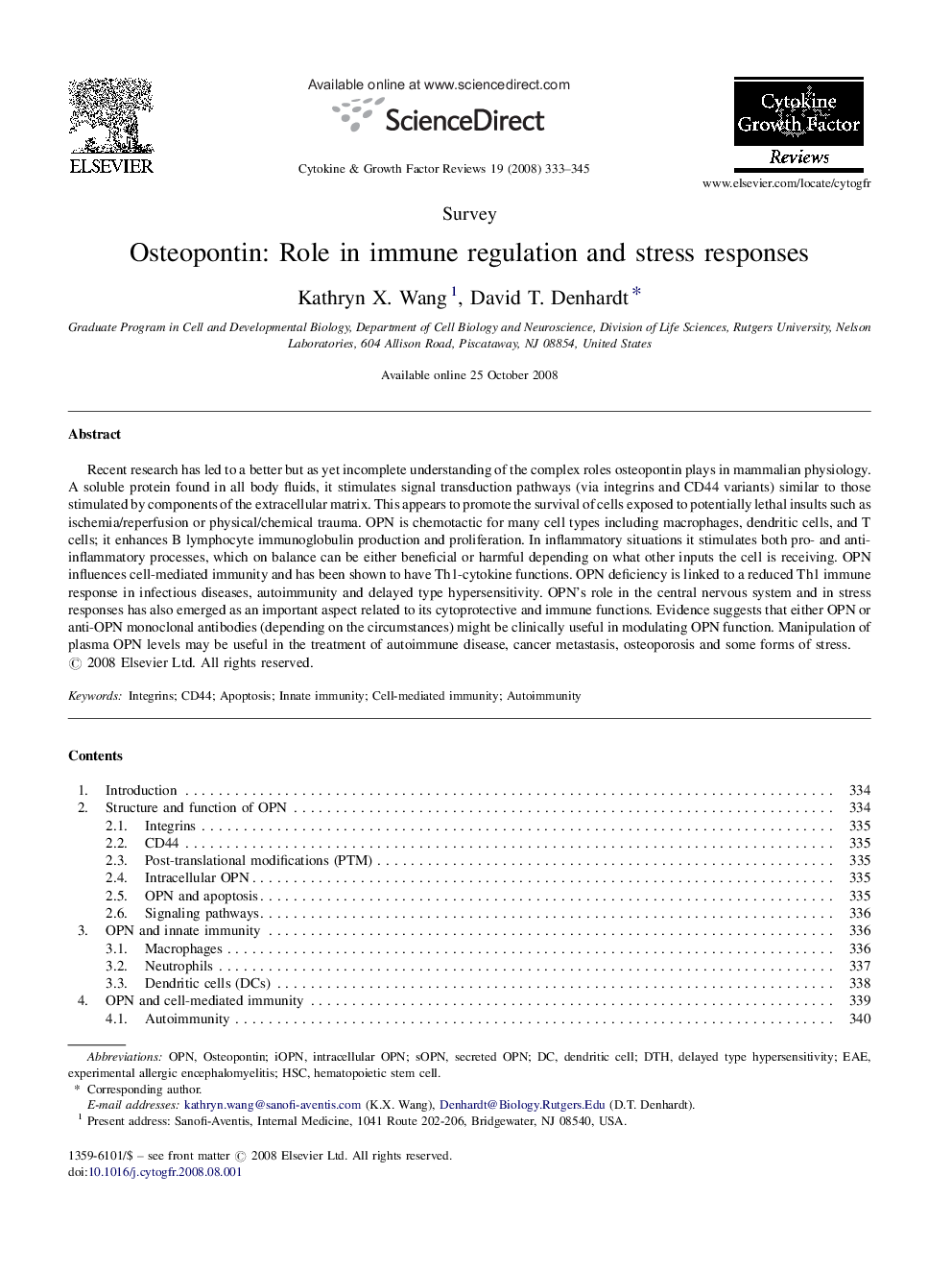| کد مقاله | کد نشریه | سال انتشار | مقاله انگلیسی | نسخه تمام متن |
|---|---|---|---|---|
| 2170806 | 1549503 | 2008 | 13 صفحه PDF | دانلود رایگان |

Recent research has led to a better but as yet incomplete understanding of the complex roles osteopontin plays in mammalian physiology. A soluble protein found in all body fluids, it stimulates signal transduction pathways (via integrins and CD44 variants) similar to those stimulated by components of the extracellular matrix. This appears to promote the survival of cells exposed to potentially lethal insults such as ischemia/reperfusion or physical/chemical trauma. OPN is chemotactic for many cell types including macrophages, dendritic cells, and T cells; it enhances B lymphocyte immunoglobulin production and proliferation. In inflammatory situations it stimulates both pro- and anti-inflammatory processes, which on balance can be either beneficial or harmful depending on what other inputs the cell is receiving. OPN influences cell-mediated immunity and has been shown to have Th1-cytokine functions. OPN deficiency is linked to a reduced Th1 immune response in infectious diseases, autoimmunity and delayed type hypersensitivity. OPN’s role in the central nervous system and in stress responses has also emerged as an important aspect related to its cytoprotective and immune functions. Evidence suggests that either OPN or anti-OPN monoclonal antibodies (depending on the circumstances) might be clinically useful in modulating OPN function. Manipulation of plasma OPN levels may be useful in the treatment of autoimmune disease, cancer metastasis, osteoporosis and some forms of stress.
Journal: Cytokine & Growth Factor Reviews - Volume 19, Issues 5–6, October–December 2008, Pages 333–345